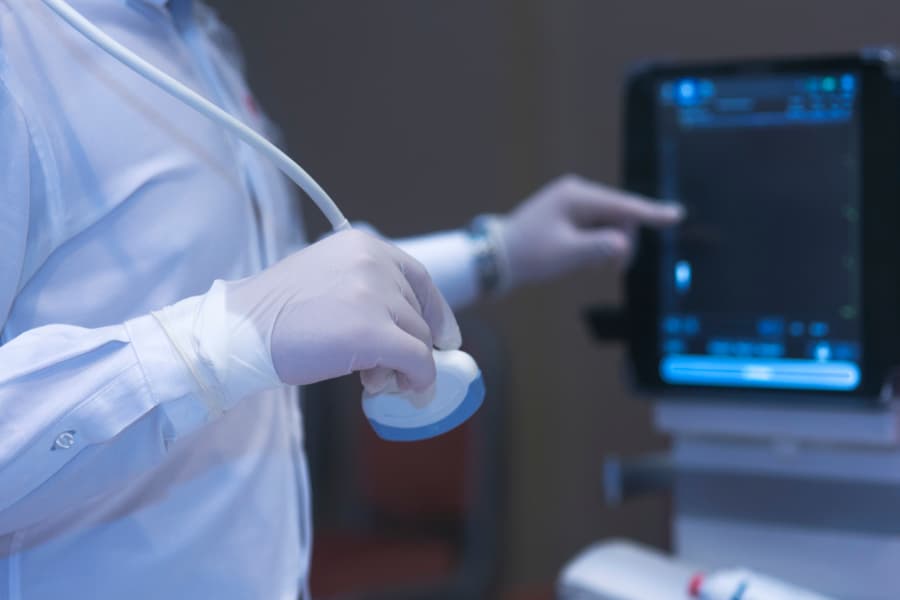
If you’re considering careers with ultrasound, you’ve come to the right place. Eastern International College offers a BS in Diagnostic Medical Sonography (DMS) program to prepare you with the education and experience you need. To learn more about what to expect when working as a sonographer, aka ultrasound technician, see some of the basics below.
What is Sonography?
Sonography is another word for ultrasound imaging. It’s the practice of using high-frequency sound waves to produce pictures of the inside of a patient’s body. When these sound waves strike an object, they bounce back, or echo. The ultrasound machine can then measure those echoes and accurately determine the size, shape and consistency of that object. In this case, that object might be an organ, tissue, blood vessel or other structure inside the body.
Doctors use ultrasounds to evaluate and diagnose a wide variety of conditions. When a patient comes in with pain or swelling, for example, the doctor might order an ultrasound to help them figure out what might be going on. As a medical sonographer, it will be your job to perform this procedure and report your findings to the physician.
Duties of a Medical Sonographer
After completing training, ultrasound technicians may often work at hospitals, physicians’ offices, imaging clinics and medical and diagnostic laboratories. You’ll get to interact with and help patients all throughout the day. Before conducting each ultrasound, you’ll first introduce yourself to the patient, explain the procedure, give instructions and do your best to help them feel comfortable.
Once the patient is settled on the examination table, it’ll be time to perform the ultrasound using an ultrasound machine. There are many different types of ultrasounds that focus on various parts of the body. In your coursework at EIC, you’ll learn all about the different types and study how to use the different instruments and machines.
Most ultrasounds are noninvasive. That means you’ll take the transducer probe, apply a clear gel to it and then press the probe to the patient’s skin over the target area. You’ll have to move the probe around and angle it in certain ways in order to get the most accurate picture. However, some types of ultrasounds, such as transrectal and transvaginal ultrasounds, are invasive, and you’ll need to insert the probe into the patient’s body in order to take the pictures the doctor needs.
Medical Sonography in Action
Medical sonography is an exciting field because there are so many different areas to specialize in. The area people are most familiar with is obstetrics and gynecology. In an OB/GYN setting, ultrasounds are used to detect pregnancy, track fetal development and diagnose conditions of the ovaries and uterus. But, as mentioned, ultrasounds are helpful for many other areas of the body, too, including the:
- Kidneys
- Gallbladder
- Heart
- Eyes
- Liver
- And more…
During your education at EIC, you’ll get to explore all the possibilities. Follow your passion and see where it leads you. By the time you graduate, you’ll be knowledgeable about and fully prepared to perform all the ultrasound scanning techniques on patients of all ages and backgrounds, so that you can go on to enjoy a long and successful career in the medical field.
Get Your Career Started
If you’re interested in becoming a sonographer, apply to the Diagnostic Medical Sonography program at Eastern International College today. Discover life at EIC and be sure to contact Admissions if you have any questions about the program or about applying. We can’t wait to meet you.
